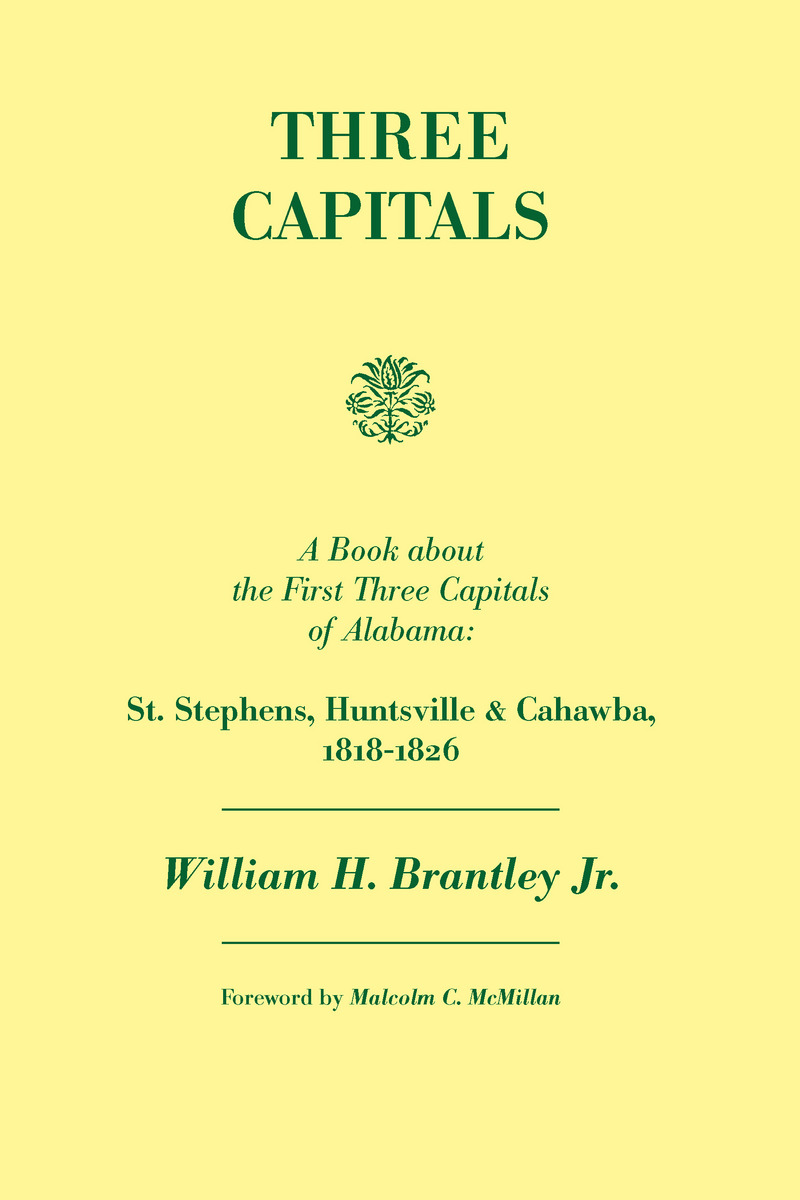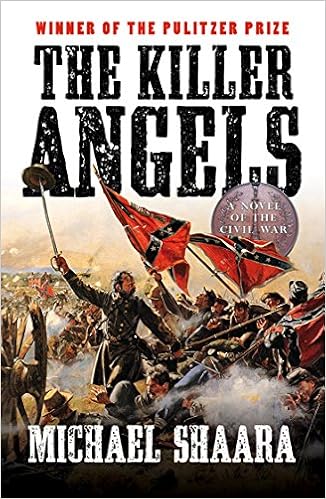Includes information on Tallulah Brockman Bankhead -- Ruth
Robertson Berrey -- Myrtle Brooke -- Annie Rowan Forney Daugette -- Loula
Friend Dunn -- Hallie Farmer -- Henrietta Magnolia Gibbs -- Amelia Gayle Gorgas
-- Dixie Bibb Graves -- Agnes Ellen Harris -- Pattie Ruffner Jacobs --
Elizabeth Johnston Evans Johnston -- Helen Adams Keller -- Kathleen Mallory --
Edwina Donnelly Mitchell -- Sister Chrysostom Moynahan -- Marie Bankhead Owen
-- Annie Lola Price -- Ruby Pickens Tartt -- Carrie A. Tuggle -- Loraine
Bedsole Tunstall -- Julia Strudwick Tutwiler -- Lurleen Burns Wallace --
Margaret James Murray Washington -- Augusta Evans Wilson.
A reign of terror swept the streets of Birmingham in the
1920s. Criminals armed with small axes attacked immigrant merchants and
interracial couples, leaving dozens dead or injured over the course of four
years. Desperate for answers, police accepted clues from a Ouija board, while
citizens clamored for gun permits for protection. The city's Italian immigrants
formed their own association as protection against the Black Hand, an organized
band of brutal criminals. Eventually, the police turned to a dangerous and
untested truth serum to elicit confessions. Four black men and a teenage girl
were charged and tried, while copycat killers emerged from the woodwork.
Journalist Jeremy Gray tackles one of the most curious and violent cases in
Magic City history.
In the spring of 2001, a community of people in the
Appalachian foothills of northern Alabama had come to the edge of all they had
ever known. Across the South, padlocks and logging chains bound the doors of
silent mills, and it seemed a miracle to blue-collar people in Jacksonville
that their mill still bit, shook, and roared. The century-old hardwood floors
still trembled under whirling steel, and people worked on, in a mist of white
air. The mill had become almost a living thing, rewarding the hardworking and
careful with the best payday they ever had, but punishing the careless and
clumsy, taking a finger, a hand, more.
The mill was here before the automobile, before the flying
machine, and the mill workers served it even as it filled their lungs with lint
and shortened their lives. In return, it let them live in stiff-necked dignity
in the hills of their fathers. So, when death did come, no one had to ship
their bodies home on a train. This is a mill story—not of bricks, steel, and
cotton, but of the people who suffered it to live.
"Three Capitals is an in-depth study of Alabama's
first three seats of government--St. Stephens, Huntsville, and Cahawba.... The
University of Alabama Press has reprinted the book in a handsome new edition
with a pertinent introduction by Malcolm C. McMillan. Brantley's study is a
tribute to the accomplishments of an amateur historian and contains a wealth of
useful information." --Bulletin of the History of the Early American
Republic
This vintage travel guide to the state was published in
1969, the 150th anniversary of the state.
This book traces Birmingham, Alabama's rapid growth from
frontier to full-fledged city during the early 20th century through the
photographs produced by the Birmingham View Company (1905-1961)
Most people do not stop to realize how many of their fond
memories involve advertising signs. Although these neon spectaculars, billboards,
and even signs painted directly onto brick walls were created expressly to
persuade customers to buy products or patronize businesses, many such signs
remained in place for so long that they became beloved landmarks in their own
right. For Images of America: Vintage Birmingham Signs, Tim Hollis has scoured
the archives of Birmingham’s former sign companies, as well as other private
collections, to compile some of the best remembered or most obscure signs that
dotted the urban and suburban landscape. Here readers will again see the
Buffalo Rock bottle pouring its ginger ale into a glass, the Golden Flake clown
smiling down at passersby, the Barber’s milk clock at the Five Points South
intersection, and many more. Through these vintage photographs, readers can
once again visit such once-thriving destinations as Eastwood Mall, Burger in a
Hurry, and the Kiddieland amusement park.
Founded in 1871 after the Civil War, Birmingham rapidly grew
as an industrial enterprise due to the abundance of the three raw materials
used in making steel--iron ore, coal, and limestone. Birmingham's rapid growth
was due to the booming iron and steel industries giving it the nickname
"Magic City" and "Pittsburgh of the South." The city was
named after Birmingham, England, as a nod to the major industrial powerhouse.
The iron and steel industries began to dry up by the early 1970s, leaving
behind dozens of abandoned structures that now dot the city's landscape. In the
last several years, Birmingham has begun to experience a rebirth. Money has
been invested in reconstructing the historic downtown area into a
pedestrian-friendly mixed-use district. In Abandoned Birmingham, photographer
Leland Kent gives the reader an in-depth look at the forgotten buildings and
factories throughout the city.
Mardi Gras in Mobile began its carnival celebration years
before the city of New Orleans was founded. In the 1700s, mystic societies
formed in Mobile, such as the Societe de Saint Louis, believed to be the first
in the New World. These curious organizations brought old-world traditions as
they held celebrations like parades and balls with themes like Scandinavian
mythology and the dream of Pythagoras. Today, more than 800,000 people annually
take in the sights, sounds and attractions of the celebration. Historian and
preservationist L. Craig Roberts, through extensive research and interviews,
explores the captivating and charismatic history of Mardi Gras in the Port
City.
This is the story of a village, how it was planned and how
it grew over eight decades. Lavishly illustrated, this book tells the story,
beginning with historic documents prepared by Jemison & Company before the
Great Depression. "This is largely a picture book, with a total of 136
photographs and drawings never seen before" says Marjorie White, Director,
Birmingham Historical Society. "In many instances, we show original
businesses, businesses that came along later, and the current look and layout
of the Village." The pages are fascinating, both in their ability to
chronicle one of Birmingham, Alabama's upscale retail markets and as a social
history. To see the original plans for the Village (included) and know it
today is a testament to the incredible investment in quality planning,"
says White.
As you travel, by car or by armchair, you will discover The
Bear Man's Last Tracks, Little Nadine's Playhouse, The Whiskey Bottle
Tombstone, the Coon Dog Memorial Graveyard, and many other stories and places
that will raise the hair on your neck, make you laugh, or move you to tears. Of
special interest to libraries and genealogists in search of local cemeteries.
Complete with black-and-white photos, directions, and state map.

Alabama: The History of a Deep South State by William Warren Rogers, Leah Rawls Atkins, Robert David Ward, and Wayne Flynt
Once the home of aboriginal inhabitants, Alabama was claimed
and occupied by European nations, later to become a permanent part of the
United States. A cotton and slave state for more than half of the 19th century,
Alabama declared its independence and joined another nation, the Confederate
States of America, for its more than four-year history. The state assumed an
uneasy and uncertain place in the 19th century’s last 35 years. Its role in the
20th century has been tumultuous but painfully predictable. This comprehensive
history, written in the last decade of that century, presents, explains, and
interprets the major events that occurred during Alabama’s history within the
larger context of the South and the nation.
Alabama: The History of a Deep South State is the first
completely new comprehensive account of the state since A.B. Moore’s 1935 work.
Divided into three main sections, the first concluding in 1865, the second in
1920, and the third bringing the story to the present, the book’s organization
is both chronological and topical.
General readers will welcome this modern history of Alabama,
which examines such traditional subjects as politics, military events,
economics, and broad social movements. Of equal value are sections devoted to
race, Indians, women, and the environment, as well as detailed coverage of
health, education, organized labor, civil rights, and the many cultural
elements—from literature to sport—that have enriched Alabama’s history. The
roles of individual leaders, from politicians to creative artists, are
discussed. There is as well strong emphasis on the common people, those
Alabamians who have been rightly described as the “bone and sinew” of the
state.
Each section of the book was written by a scholar who has
devoted much of his or her professional life to the study of that period of
Alabama’s past, and although the three sections reflect individual style and
interpretation, the authors have collaborated closely on overall themes and
organization. The result is an objective look at the colorful, often
controversial, state’s past. The work relies both on primary sources and such
important secondary sources as monographs, articles, and unpublished theses and
dissertations to provide fresh insights, new approaches, and new
interpretations.

Let Us Now Praise Famous Men: The American Classic, in Words and Photographs, of Three Tenant Families in the Deep South by Walker Evans and James Agee
A landmark work of American photojournalism “renowned for
its fusion of social conscience and artistic radicality” (New York Times)
In the summer of 1936, James Agee and Walker Evans set
out on assignment for Fortune magazine to explore the daily lives of
sharecroppers in the South. Their journey would prove an extraordinary
collaboration and a watershed literary event when, in 1941, Let Us Now
Praise Famous Men was first published to enormous critical acclaim. This
unsparing record of place, of the people who shaped the land and the rhythm of
their lives, is intensely moving and unrelentingly honest, and today—recognized
by the New York Public Library as one of the most influential books of the
twentieth century—it stands as a poetic tract of its time. With an elegant new
design as well as a sixty-four-page photographic prologue featuring archival
reproductions of Evans's classic images, this historic edition offers readers a
window into a remarkable slice of American history.

/16258/9781625858979-FrontCvr-300p.png)



















